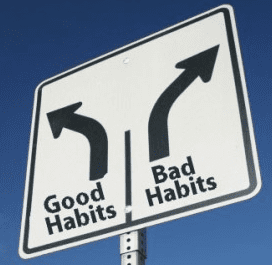 We all know we have habits. Some of them are good habits. And some of them are…well… not so good. The less often talked about cousin of a habit is a routine. Habits and routines can impact situational awareness in both good and bad ways. [tweet this]
We all know we have habits. Some of them are good habits. And some of them are…well… not so good. The less often talked about cousin of a habit is a routine. Habits and routines can impact situational awareness in both good and bad ways. [tweet this]
But where do habits and routines come from? Does a habit turn into a routine? Or does a routine turn into a habit? Do habits and routines prevent complacency or contribute to it? All good questions. Let’s explore habits, routines and complacency.
Habits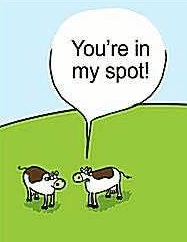
Webster defines a habit as: A behavior pattern acquired by frequent repetition or physiologic exposure that shows itself in regularity or increased facility of performance; an acquired mode of behavior that has become nearly or completely involuntary.
Routines
Webster defines a routine as: A habitual or mechanical performance of an established procedure.
The chicken or the egg
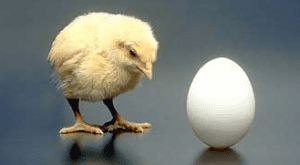 The definitions offer up the age-old, or should I say the “egg old”, question: What came first, the chicken or the egg? In the context of this topic, the question is: Do habits form routines or do routines form habits? [tweet this] An argument could be made for either to come first. Your routines can become your comfortable habits. Your habits can turn into your comfortable routines.
The definitions offer up the age-old, or should I say the “egg old”, question: What came first, the chicken or the egg? In the context of this topic, the question is: Do habits form routines or do routines form habits? [tweet this] An argument could be made for either to come first. Your routines can become your comfortable habits. Your habits can turn into your comfortable routines.
Enter complacency
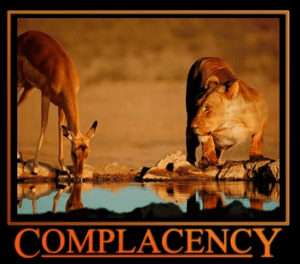 Webster defines complacency as: Self-satisfaction especially when accompanied by unawareness of actual dangers or deficiencies. [tweet this] It is very unfortunate that complacency has become a habit for some responders. Some have become satisfied and comfortable in doing things in ways that are dangerous to the point they have become unaware (or arguably, uncaring) about the dangers. This can have catastrophic consequences.
Webster defines complacency as: Self-satisfaction especially when accompanied by unawareness of actual dangers or deficiencies. [tweet this] It is very unfortunate that complacency has become a habit for some responders. Some have become satisfied and comfortable in doing things in ways that are dangerous to the point they have become unaware (or arguably, uncaring) about the dangers. This can have catastrophic consequences.
Contagious complacency
A complacent responder can “infect” other responders. [tweet this] When this happens, the consequences can be significant. In fact, an entire company can become complacent. And worst of all, an entire department can become complacent. When this happens, the department can sink into a comfortable rut and become arrogant.
Members can begin to believe they are so good at what they do that a bad outcome will never happen… because it never does. The success of past outcomes can contribute to complacency. When members perform in ways that are not consistent with best practices – and get away with it (i.e., no bad outcome) – it can build confidence that is based in luck, not ability.
False confidence
 When responders experience successful outcomes, this builds confidence. This, unto itself, is not a bad thing so long as the success was based on performance consistent with best practices. However, all success builds confidence. Meaning success resulting from luck also builds confidence, albeit false confidence.
When responders experience successful outcomes, this builds confidence. This, unto itself, is not a bad thing so long as the success was based on performance consistent with best practices. However, all success builds confidence. Meaning success resulting from luck also builds confidence, albeit false confidence.
Psychologists that study the behavior of gamblers see this all the time. A gambler wins because they have some “strategy” for beating the odds. Their success gives them confidence which can increase their risk taking. Over the long run, a gambler who thinks they can beat the odds eventually lose. But not every gambler is a loser over the long run. There is a small number whose 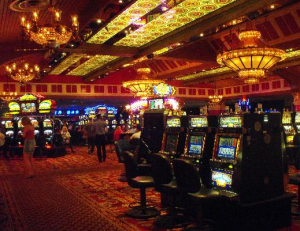 luck runs longer than others. Observing responders who have found long term luck can give others responders a false confidence they can cheat the system too. In the end, the casino wins. If you doubt this, only look at the lavishness of a casino. Those structures are built on the losses of gamblers.
luck runs longer than others. Observing responders who have found long term luck can give others responders a false confidence they can cheat the system too. In the end, the casino wins. If you doubt this, only look at the lavishness of a casino. Those structures are built on the losses of gamblers.
Chief Gasaway’s advice
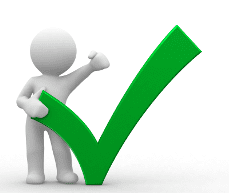 To overcome the curse of complacency, responders must first be aware of the affliction they are facing. This awareness comes from becoming a student of best practices. This involves learning about best practices and comparing what your department does to first responder best practices. Read firefighter casualty reports to learn how responders die. Then compare the circumstances, situational awareness and decision making of catastrophic outcomes to how your department does things.
To overcome the curse of complacency, responders must first be aware of the affliction they are facing. This awareness comes from becoming a student of best practices. This involves learning about best practices and comparing what your department does to first responder best practices. Read firefighter casualty reports to learn how responders die. Then compare the circumstances, situational awareness and decision making of catastrophic outcomes to how your department does things.
When you see inconsistencies between established best practices and how your department does things, it may be time to start asking the hard questions. Why does your department do things differently than best practices dictate? Have you found a better way to get the job done? Is your better way safe, or have you just been lucky?
Avoid judging bad outcomes that others experience. Oftentimes when a responder reads a casualty report they can judge the performance of others without turning that harsh judgment on themselves or on their own department. We can be lulled into thinking the department that experienced the bad outcome were less competent where, in fact, maybe their luck ran out.
Discussion Questions
 1. Discuss areas where your department may have become complacent in training or performance.
1. Discuss areas where your department may have become complacent in training or performance.
2. Discuss areas where you have become personally complacent in your application of best practices.
3. Discuss ideas about how to break the cycle of complacency in your organization.
The mission of Situational Awareness Matters is simple: Help first responders see the bad things coming… in time to change the outcome.
Safety begins with SA!
_________________________________________________________________________________
Share your comments on this article in the “Leave a Reply” box below. If you want to send me incident pictures, videos or have an idea you’d like me to research and write about, contact me. I really enjoy getting feedback and supportive messages from fellow first responders. It gives me the energy to work harder for you.
Thanks,
Email: Support@RichGasaway.com
Phone: 612-548-4424
Facebook Page: www.facebook.com/SAMatters
LinkedIn: Rich Gasaway
Twitter: @RichGasaway
YouTube: SAMattersTV
iTunes: SAMatters


Thank you for this article, Rich. I realize its addressing first responders, but thought you’d like to hear of how its been applied in other industries recently.
1. I work as a ski instructor out West at a HUGE resort. Naturally, skiers (especially those of us out there every day at work) are at greater risk of injury due in part to a false sense of complacency. Since applying your advice as a whole team before the season begins (we have to satisfy safety awareness requirements before being allowed on the snow every season, plus our admin are constantly on us about breaking our complacency habits, etc), I can say confidently that MY SA has improved tremendously, and I’d venture to guess most of my coworkers’ SA has as well.
Unfortunately, I wasnt as digent personally applying your advice at my OTHER job, so my SA just got me in trouble after a 30-year career…as a classroom teacher, of all things. Because I’d never received anything but glowing reviews (due to the achievements of the vast majority of former students), I never really worried too much about the occasional students and/or parents with established patterns for creating problems. I’ve been blessed (and still am) with having administration who always “had their teachers’ backs” on the rare occasions when these chronically unhappy people would begin their litany of complaints, deep denial and finger-pointing behaviors.
This year, however, due to an unforseen financial emergency, I agreed to privately teach an 8th grade boy from a very wealthy family, taking him on as a favor to a private-school owner (who also had no real background knowledge of the kid). I was tasked with going to his home to teach him what I assumed to be grade-level material for 3 to 5 days each week. I quickly realized, however, this teen had several problems: he was about 3 years behind academically and exhibited extreme attention-seeking behaviors, largely due to his self-absorbed, absentee parents, his out-of-control older brothers, and his complete lack of motivation to do anything but play around. Hindsight being what it is, I SHOULD have either 1) altered the terms of the agreement to insist that our meeting place be somewhere public, 2) record every single teaching session (impractical, I know), and/or 3) demanded some kind of prior records from past teachers who could provide me with some insight before I agreed to work with him.
I’m now dealing with the fallout, months later, of falsely assuming the parents had a realistic view of their boy’s character or behavior (any of their sons behaviors, actually). I now know the alarming extent to which the parents will cause problems for any teacher, public or private, who even hints that their child may demonstrate problems with laziness, entitlement, or lying.
Lesson learned: NEVER meet in any place with just myself and a student, unless the entire thing is being videotaped, to prevent outrageous, false accusations.
Excellent article, learnt a lot and will share the knowledge. Thank you!